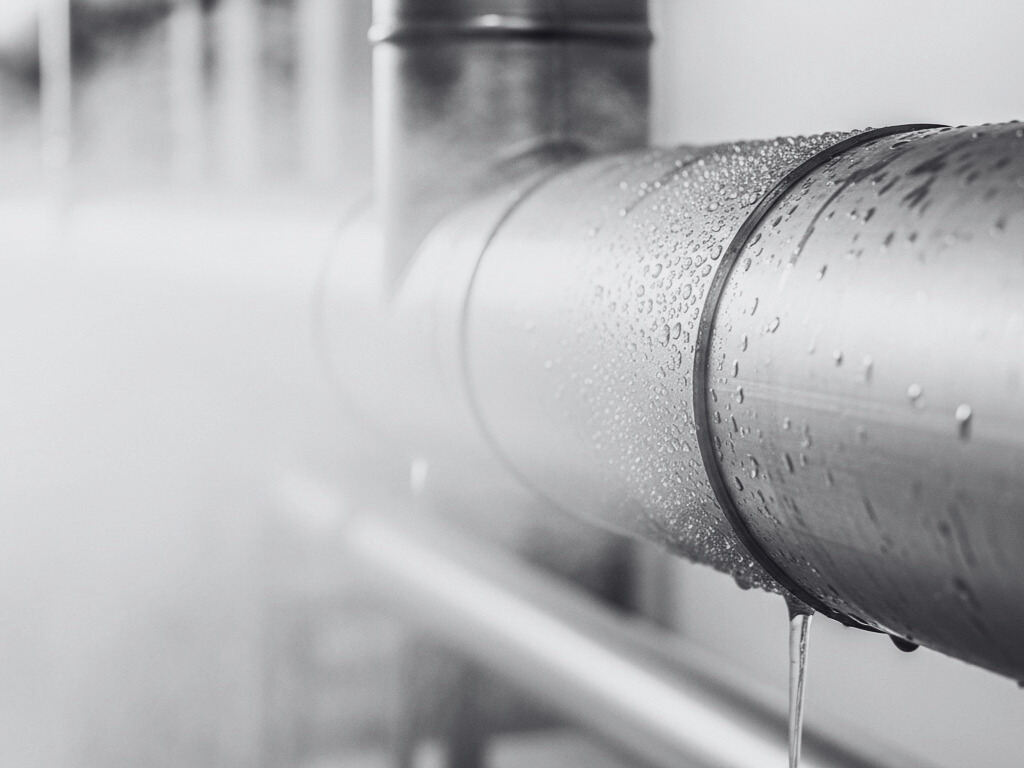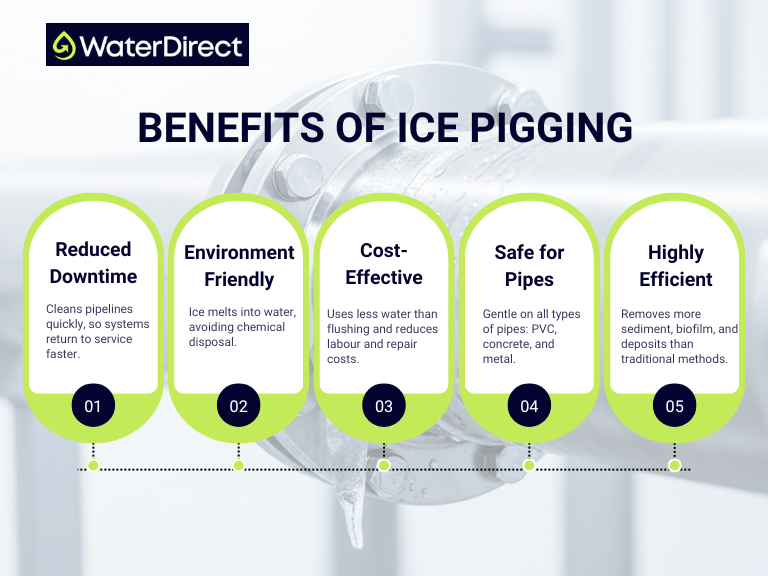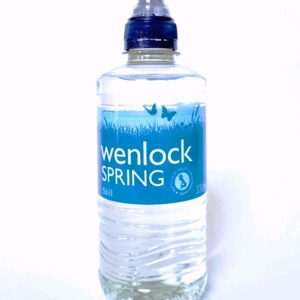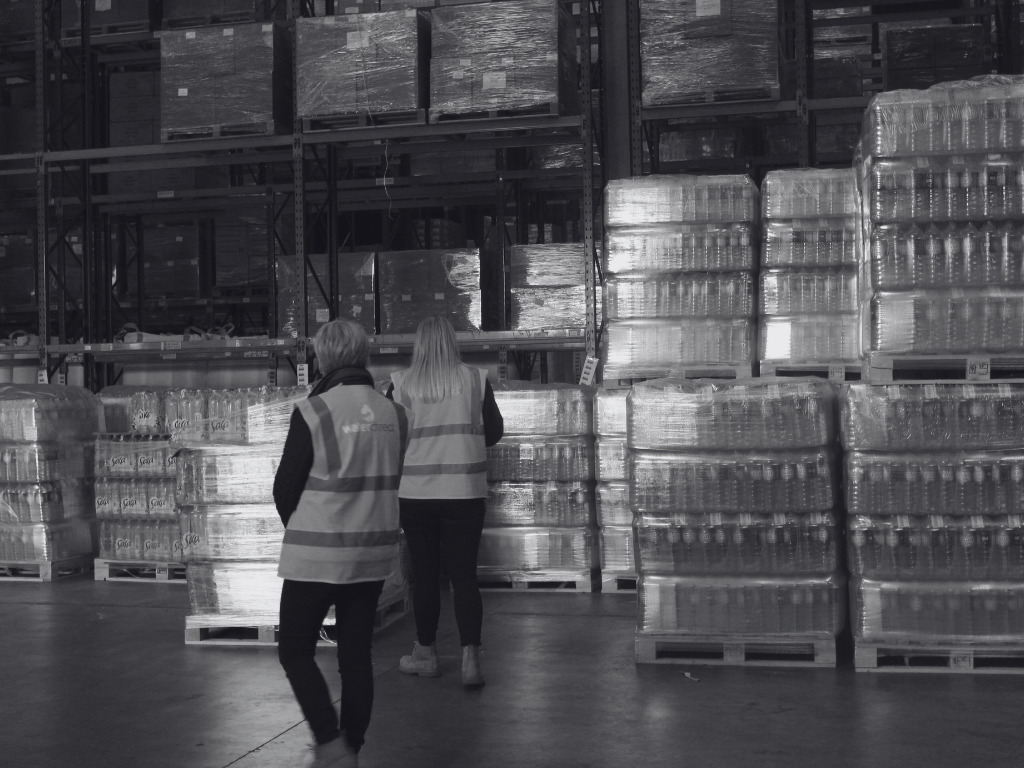
Understanding Ice Pigging: Techniques, Benefits, and Applications
Maintaining clean and efficient water networks is critical for businesses that rely on a secure and uninterrupted supply. Traditional methods of pipeline cleaning, such as mechanical or chemical treatments, can be disruptive, expensive, and environmentally challenging. An innovative solution known as ice pigging is changing the way organisations manage their water infrastructure, offering a safer, faster, and more sustainable approach.
What Is Ice Pigging?
Ice pigging is a pipe cleaning technique that uses a slurry of ice crystals and water to remove deposits, sediments, and biofilms from the inside of pipelines. Instead of using solid plugs (known as pigs) or harsh chemicals, the ice slurry is pumped through the pipeline to gently but effectively scour the inner surface.
The ice acts as a semi-solid, creating enough friction to clean but without causing damage to the pipe walls. Once the process is complete, the ice melts naturally into water, leaving no hazardous waste.
While specialist operators carry out the cleaning, we provide the high volumes of water needed
to make ice pigging effective and efficient.
How Does Ice Pigging Work?
The process is relatively straightforward and designed to minimise disruption:
- Preparation: A specialised ice slurry is produced by blending chilled water with fine ice crystals. The consistency is thick enough to push through the pipe and scrape deposits, yet soft enough not to damage the pipe walls.
- Injection: The slurry is pumped into the pipeline at one end. Unlike mechanical pigs, it can pass through valves, bends, and diameter changes, making it suitable for complex networks.
- Cleaning action: As the ice slurry flows, it acts like a moving scourer, gently scraping away sediment, biofilms, mineral scale, and accumulated debris. The abrasive action is strong enough to clean thoroughly while maintaining pipe integrity.
- Discharge: At the outlet, the mixture of ice and loosened material is safely flushed out and disposed of. Because it’s just ice and water, disposal is simple and environmentally friendly.
Our Role: While ice pigging requires specialist operators, it also relies on high volumes of water to perform effectively. This is where we support the process, supplying the water that ensures ice pigging runs smoothly, efficiently, and on schedule. By partnering with industry specialists, Water Direct helps businesses maintain clean pipelines without disruption.
Benefits of Ice Pigging
Ice pigging in the UK gives businesses and water utilities an efficient and environmentally friendly way to clean and maintain their water systems, offering a range of practical benefits:
- Reduced downtime – Cleaning can be carried out quickly, allowing systems to be returned to service faster.
- Environmentally friendly – The ice melts into water, eliminating the need for chemical disposal.
- Cost-effective – Less water is wasted compared to flushing, and there are fewer labour and repair costs.
- Safe for pipes – Suitable for a variety of materials, including PVC, concrete, and metal pipes.
- Highly efficient – Can remove more sediment and deposits than conventional flushing techniques.

Applications in the UK Business Sector
Ice pigging has proven valuable across different industries that require reliable water networks:
- Food and beverage manufacturing – Where hygiene and pipe cleanliness are critical for operations.
- Pharmaceutical production – Ensuring water supply systems remain free from biofilm contamination.
- Energy and utilities – Supporting infrastructure maintenance while minimising downtime.
- Emergency water supply networks – Supporting maintenance of backup and contingency pipelines by providing the necessary water for ice pigging operations.
By ensuring sufficient water availability, businesses can strengthen their continuity planning, keeping critical systems ready when needed most.
Environmental and Operational Advantages
With the UK placing increasing emphasis on water efficiency and sustainability, ice pigging offers strong environmental benefits. It uses significantly less water than conventional flushing methods and avoids introducing chemicals into the supply. According to studies referenced by organisations such as Ofwat and Water UK, reducing water waste is a key priority for utilities and businesses alike.
By integrating ice pigging into routine maintenance, businesses can also reduce operational risks, avoiding costly breakdowns or contamination issues that conventional pipeline cleaners may struggle to prevent.
Challenges and Limitations
While highly effective, ice pigging pipe cleaning is not suitable in every scenario. It requires specialised equipment and trained operators, which can limit accessibility in certain areas. Additionally, pipe networks with sharp bends or restrictions may not always be suitable for the process.
Conclusion
Innovative pipe cleaning with ice pigging represents a modern, sustainable, and efficient method for cleaning water pipelines. For UK businesses that depend on a reliable water supply, whether in food production, pharmaceuticals, energy, or contingency planning, it offers a powerful alternative to conventional flushing and chemical cleaning. By adopting ice pigging, companies can improve system performance while supporting sustainability goals.
FAQs
What is ice pigging used for?
Ice pigging is used to clean the inside of water pipelines, removing sediment, biofilm, and other build-ups that can affect water quality and flow.
Is ice pigging safe for drinking water pipelines?
Yes. Ice pigging is safe and approved for use in potable water systems, as the ice slurry melts into harmless water.
How does ice pigging compare to traditional flushing?
Ice pigging uses less water, achieves better cleaning results, and causes less disruption compared to conventional flushing methods.
Which industries benefit most from ice pigging?
Industries such as food and beverage, pharmaceuticals, energy, and businesses that rely on emergency water supply benefit greatly from the process.
Share:





